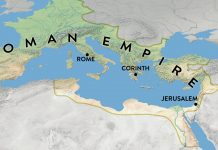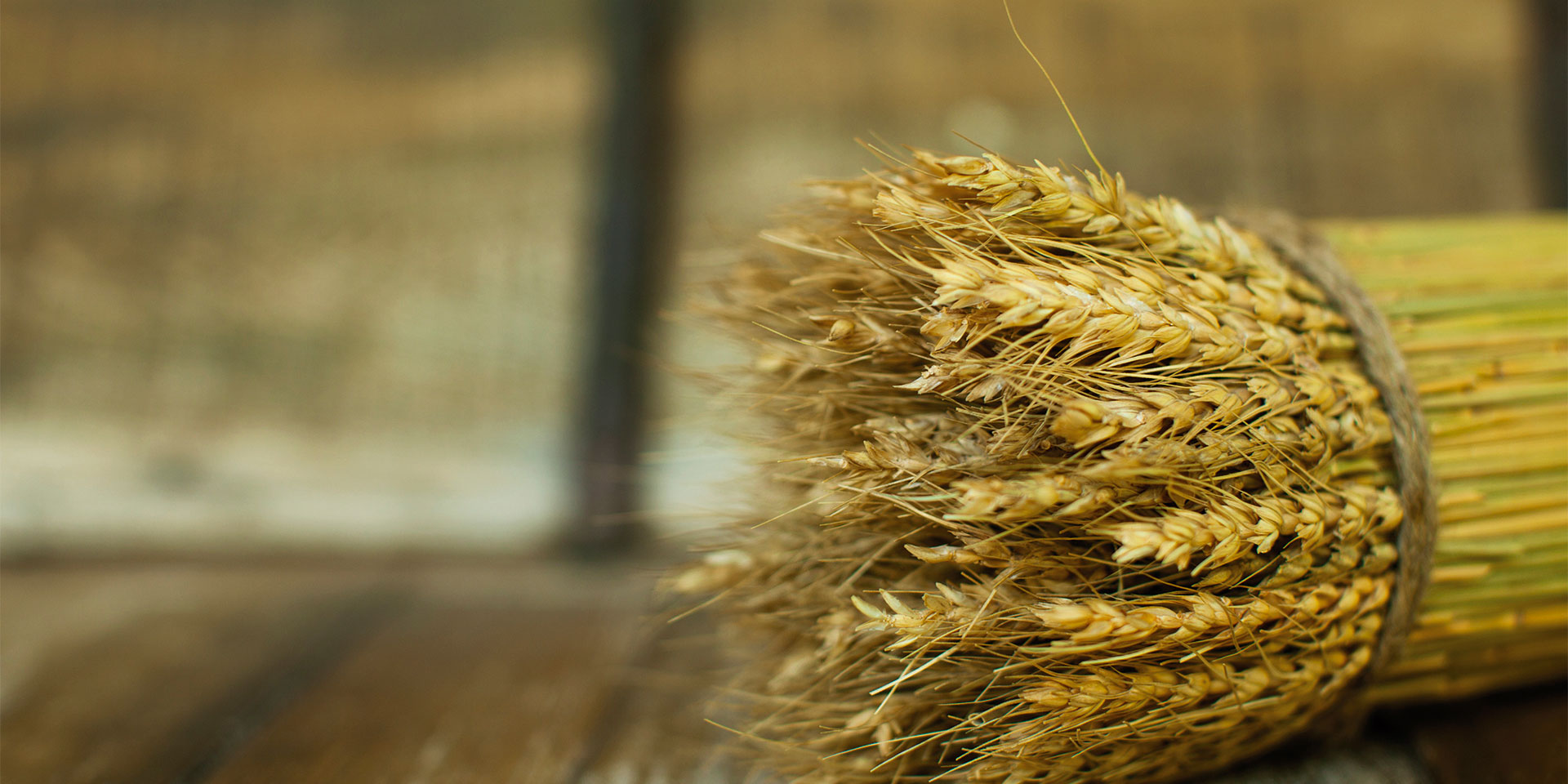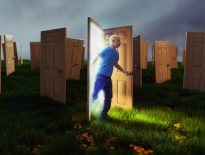The Parable of the Sower appears to be the key to understanding all the other parables told by Jesus. It is neither mysterious nor cryptic; it simply provides a starting point. The apostles and all those who read the parable today are asked by Jesus Christ: “Don’t you understand this parable? How then will you understand any parable?” (Mark 4:13). The logical conclusion is that this is the ABC of parables.
“Listen! A farmer went out to sow his seed. As he was scattering the seed, some fell along the path, and the birds came and ate it up. Some fell on rocky places, where it did not have much soil. It sprang up quickly, because the soil was shallow. But when the sun came up, the plants were scorched, and they withered because they had no root. Other seed fell among thorns, which grew up and choked the plants, so that they did not bear grain. Still other seed fell on good soil. It came up, grew and produced a crop, some multiplying thirty, some sixty, some a hundred times” (Mark 4:3-8).
Imagine the sower going out into the field. Thinking of the harvest to come, he scatters the seeds across the field, which is neither barren nor perfectly plotted. Some of the seed falls where it should, but some falls where it should not. Some falls along the path, a free feast for the crows; some falls on rocky soil, where the branches grow faster than the roots; some falls among thorns and will perish, exhausted by competing with the weeds; and some falls on good soil, growing silently and fruitfully, almost boringly obedient.
This parable, taken from first-century Christian agriculture, with its specific imagery of seed, field, weeds and crows, seems to have lost all relevance in a third-millennium society dominated by steel, asphalt, and fibre optics. Who goes out into the fields in a world where the closest most people come to farming is playing Farmville?[1] And yet, the message of the parable remains as relevant today as ever, as it can be projected into any time and place.
Murad’s treasure (the seed by the roadside that was eaten by crows)
Morning, 1 September 2013. This was a truly historic day, as the largest hoard of silver coins in Romania was discovered. Iulian Enache from Golești in Vâlcea set off one morning with his metal detector to find “Murad II’s treasure”—50 kilograms of silver Ottoman coins—an endeavour motivated purely out of passion.
“I had been in the field before, right there, in that area. Nothing. It’s true that it’s quite a large area and you can’t cover it very quickly. I was scanning with the detector when suddenly it gave me a good signal. I dug around and found the first silver coin right on the edge of the road I had come from. I wiped the dirt off, looked at it and realised it was the oldest coin I had ever found—and it was silver! You can imagine the joy I felt.”[2]
“Who would have thought? A familiar, well-trodden place at the side of the road… Further to the right, in the field below the road, the device gave another signal. Then, one after another, more and more appeared.”
“It crossed my mind that it might be a treasure…” Finally, dozens of metres away from the road, the young man dug until he reached the core: “…a huge sphere of coins… They started to appear at a depth of about 25–27 cm. I reached a depth of 60–65 cm. You can imagine—over 55 kilograms! I was in seventh heaven.”
“Treasure,” “heaven,” “silver,” “joy”… Iulian’s words seem like something out of a fairy tale, and until recently, he was probably seen as a dreamer. Is it worth believing when so many don’t? Iulian found a treasure. And there are others, no doubt. But not at the side of the road. If you spend your life in the ditch, you’ll just be covered in dirt and maybe a little richer from the crows’ scraps.
Roșia Montană (the seed from a rocky place, without roots)
This is a topic that divided Romania between cyanide and jobs, between gold and misery, as was famously captured in Octavian Goga’s verses: “Our mountains bear gold / We beg from door to door.” After years of stagnation, the situation escalated exponentially in 2013. Suddenly, it seemed, a new generation of protesters had emerged, resembling a resistance movement.
But is it worth believing when so many don’t? They think so. However, enthusiasm and awakening are not everything.
On a broader international scale, a glance at the Middle East tells us that the Arab Spring was a flash in the pan. Although it has much deeper implications than the Apuseni Mountains’ gold mines and benefits from the attention of foreign ministries, Egypt and all the other Middle Eastern countries in turmoil show us that “internal reality beats revolutionary hysteria.” So, after the Arab Spring, Egypt became a “last nail in its coffin.”[3] Perhaps it won’t be the last.
One thing is certain: an initiative can attract attention and change the world. All great movements start with an idea and a small group. But so many have perished as quickly as they began… And people ask themselves, not just pessimistically but from experience, “How long will the miracle last?”
The Parable of the Sower tells of a seed that “sprang up quickly.” Well-known seeds of scandal include miracle cures, panaceas, profitable companies, shattered rankings, and charismatic ministers or candidates. Such seemingly spontaneous appearances, which far exceed the laws of normality and promise unparalleled returns, should be viewed with suspicion—not with the evil eye but with a keen eye.
The insomnia of the rich (the seed among thorns, suffocated by them)
Analysts at Forbes also compile all kinds of rankings. For example, they compile rankings of the fears of rich people. These include the risk of being cheated, identity theft, court cases and kidnapping. “They have all sorts of security issues… because they have more at stake,” says Russ Alan Prince, who has studied the lives of wealthy people for over two decades.[4] However, at the top of the list is the fear of not being able to maintain one’s status and the desire to permanently raise it and always move forward.
Yes, higher! The parable speaks of the seed that fell among thorns, which could not grow because it was choked by “the worries of this life, the deceitfulness of wealth and the desires for other things.” The poor are no better off: 90% of American illnesses are rooted in money problems. “Economic insecurity and preoccupation with making more and more money is a national illness within itself” given that the average American income is adequate, yet cannot keep up with the obsession of acquiring more and more luxuries.[5]
And yet the story of John D. Rockefeller is reminiscent of the seed among thorns. By the age of 33, he was a millionaire; by 43, he dominated the oil industry; and by 53, he was the richest man in the world. Despite not smoking or drinking alcohol, by the age of 50 he was overwhelmed by stress, had digestive problems, and had lost all his hair. Despite earning a million dollars a week, he could only eat milk and biscuits. He suffered from anxiety and insomnia, and doctors didn’t expect him to live much longer. Newspapers had his obituary ready. This was the moment he made the radical decision to change his life and be known differently. Is it worth believing when so many don’t?
According to Biography magazine, Rockefeller was known as both the most hated businessman of the 19th century and the most generous philanthropist of the 20th century.[6] In other words, he was a man who spent the first half of his life making money and the second half giving it away.[7] He lived to the venerable age of 97. He lived life to the fullest, unburdened by worries or riches.
“The Jesus Effect” (the seed sown in good soil that bears fruit)
It was the 1980 Winter Olympics in Lake Placid, New York, USA. One man won all five skating events, from sprint to long distance: 500m, 1,000m, 1,500m, 5,000m and 10,000m. He thus set four Olympic records and one world record. This unrivalled athlete was Eric Heiden.
In his book The Jesus Effect,[8] author Dennis E. Hensley reveals a unique perspective on the victories at Lake Placid, offering insights into the experiences of the other skaters who competed against the invincible Heiden. It’s easy to imagine: each of them is a great skater in their own country, with some even holding world records. But they are entering the race against the revelation of the moment: the man who, aged 21, had broken 15 world records. The outcome was predictable because he had rarely been defeated in a race in the previous two years. He was “number one,” the man who would become known as the “Golden Man.”[9]
And there they are, with the ball and chain… Do they stand a chance? Is it worth believing when so many don’t?
Everyone knows the favourite and the losers: bettors, spectators, coaches. In every race, all the other participants dream of winning silver at best. Go! … Finish! Amazingly, some of them broke their own career records despite being defeated by Heiden in the various events![10] They didn’t win gold and they may not have even made it onto the podium, but they performed better than ever before. Naturally, the spotlight was on Heiden. However, in practical terms, it wasn’t just the medallists who won. One won by 30 hundredths of a second, another by 60 and another by a whole second. Each one won in their own way, defeating their greatest opponent—themselves. It’s a different kind of maths, a reality worth unearthing: the Jesus effect—behind a Model, even if you fall in His footsteps, you will still surpass yourself.
He who has ears to hear
A better title for this parable would be “The Parable of the Field”, because the final outcome is not determined by the predestination given by the sower or the nature of the seed. It is the quality of the field. Any truth or valuable seed may fall by the side of the road, trampled underfoot and worn out by the passing of time; it may be received with open arms and enthusiasm, only to be cast aside in contempt; or it may be cultivated responsibly, yet be stifled by ever-changing priorities. Ultimately, it can be embraced and nurtured in a fertile heart, bearing the expected fruit. How much? It does not matter, because the Sower rejoices in all those who bear fruit. Fruit is any grain that is more than oneself.
The Apostle Paul says that “a man reaps what he sows” (Galatians 6:7) and this principle can also be applied to spatial coordinates: “Where a man sows, this is where he will also reap.” So, is it worth sowing, even if so many do not?



















